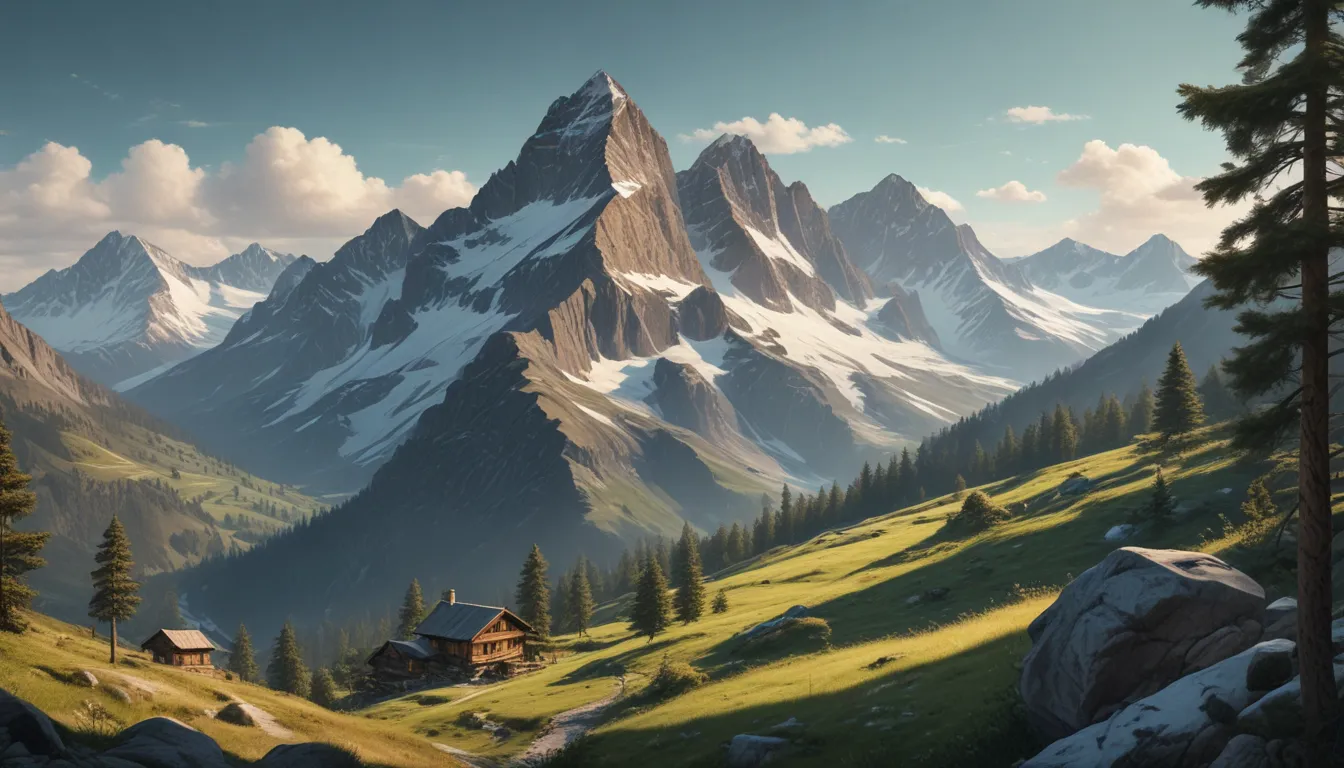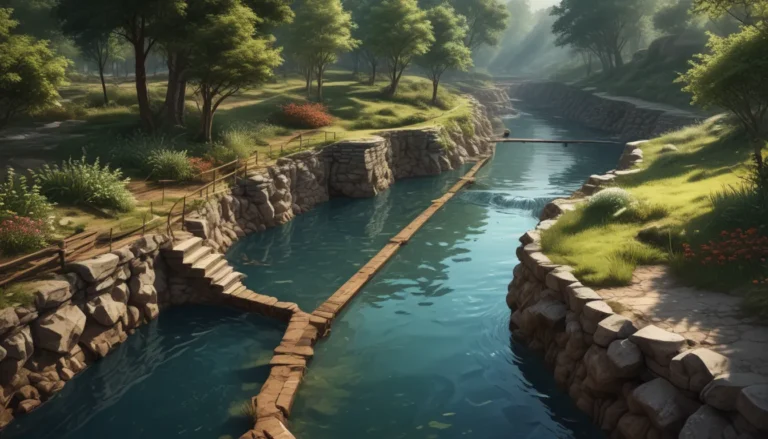A Note About Images: The images used in our articles are for illustration purposes only and may not exactly match the content. They are meant to engage readers, but the text should be relied upon for accurate information.
Are you ready to venture into the enchanting world of the Alpine climate? Known for its breathtaking mountainous landscapes and unique weather patterns, the Alpine climate offers a glimpse into the power and beauty of nature. Whether you’re a nature enthusiast, a geography buff, or simply curious about our planet’s diverse climates, join us on a journey to discover the wonders of the Alpine climate. From extreme temperature variations and heavy snowfall to diverse wildlife and the crucial role in water resource management, the Alpine climate has so much to offer. Let’s dive into ten fascinating facts that make this climate type so special.
The Majesty of the Alps
The Alpine climate is predominantly found in mountainous regions, with the Alps being a prime example. Home to some of the highest peaks in the world, such as Mount Everest, the Alps offer not only spectacular views but also create a distinct climate characterized by its high elevation and rugged terrain.
Extreme Temperature Fluctuations
One of the defining features of the Alpine climate is its wide temperature variations. During the day, temperatures can soar to scorching highs, while at night, they plummet to freezing lows. This stark contrast creates challenging and unpredictable weather conditions that define the Alpine regions.
Snow-Covered Landscapes
Thanks to the cold temperatures and moisture-laden air, Alpine climates experience abundant snowfall. The snow-covered landscapes transform into a winter wonderland, offering opportunities for a variety of winter sports and activities that attract outdoor enthusiasts from around the globe.
Resilient Alpine Vegetation
The plants and vegetation in Alpine regions have evolved unique adaptations to survive harsh conditions. Low-lying and compact, with features like hairy leaves and deep root systems, these plants minimize water loss and absorb nutrients from the rocky terrain, showcasing nature’s remarkable resilience.
Diverse Wildlife Adaptations
Despite the challenging environment, Alpine climates support a wide range of animal species. From mountain goats and ibexes to elusive snow leopards, these animals have evolved unique characteristics to thrive in the rugged terrain and harsh conditions of the Alpine climate.
Water Tower of the World
Alpine regions play a crucial role in water resource management. Acting as water towers, these areas provide freshwater to downstream regions through the melting snow and glaciers, forming rivers and lakes that are essential for agriculture, energy production, and drinking water.
Outdoor Paradise
With their stunning landscapes and diverse ecosystems, Alpine regions are a paradise for outdoor enthusiasts. Activities like hiking, skiing, mountaineering, and wildlife exploration are popular among those seeking adventure and a deeper connection with nature in these remarkable environments.
Facing Climate Change
As global temperatures rise, Alpine regions are experiencing significant changes. Glaciers are melting, leading to a reduction in freshwater resources, and ecosystems are being disrupted. Conservation efforts and sustainable practices become crucial to protect these vulnerable environments from the impacts of climate change.
Influencing Regional Weather Patterns
The unique topography and atmospheric conditions of Alpine regions have a significant impact on local weather patterns in adjacent areas. Interactions between mountains and prevailing winds can create microclimates and variations in rainfall distribution, shaping the weather in these regions.
Experience the Magnificence
No words or pictures can truly capture the beauty of Alpine climates. The breathtaking views, crisp air, and sense of awe inspired by these majestic landscapes can only be fully appreciated by visiting and immersing oneself in the wonders of these remarkable regions.
Conclusion: An Alpine Adventure Awaits
In conclusion, the Alpine climate presents a fascinating and unique environment found in high-altitude regions worldwide. With its extreme temperatures, diverse flora and fauna, and crucial role in water resource management, the Alpine climate offers both challenges and wonders for those who explore it. The resilience of Alpine vegetation and wildlife, coupled with the impacts of climate change, add layers of intrigue to this captivating climate type. Whether you’re a hiker, a nature lover, or a climate enthusiast, an adventure in the Alpine climate promises to be an awe-inspiring experience.
FAQs: Your Alpine Climate Questions Answered
-
What is an alpine climate?
An alpine climate is a high-altitude climate typically found in mountainous regions characterized by cold temperatures, strong winds, and a short growing season. -
Where are alpine climates found?
Alpine climates can be found in high-altitude regions worldwide, including the Andes, the European Alps, the Himalayas, and the Rocky Mountains. -
What type of vegetation is found in alpine climates?
Alpine climates are home to unique vegetation adapted to harsh conditions, including alpine grasses, wildflowers, dwarf shrubs, and hardy conifers. -
Are there animals adapted to the alpine climate?
Many animals have evolved unique adaptations to thrive in alpine environments, such as mountain goats, snow leopards, marmots, and ptarmigans. -
How does climate change affect alpine regions?
Climate change has significant impacts on alpine regions, including glacier retreat, changes in precipitation patterns, and shifts in vegetation zones, threatening the ecosystem balance and species survival. -
Can people live in alpine regions?
While challenging, some communities have adapted to the alpine climate with sustainable livelihoods like farming, tourism, and mountaineering. -
Can you engage in recreational activities in alpine environments?
Yes, alpine regions offer various recreational activities like hiking, skiing, mountaineering, and wildlife watching for visitors to experience the beauty and thrill of the alpine climate. -
Is conservation effort in place for alpine regions?
Numerous organizations and governments are actively working to conserve and protect alpine regions, preserving biodiversity, managing tourism sustainably, and mitigating climate change impacts. -
Can visiting alpine regions be dangerous?
Yes, visiting alpine regions can be risky due to challenging conditions, high altitude sickness, and unpredictable weather, requiring preparation, safety guidelines, and expert advice for exploration.
Experience the wonders of the Alpine climate and embark on an exciting journey through nature’s marvels. Whether you’re seeking adventure, exploration, or simply a deeper connection with the beauty of our planet, the Alpine climate has something special to offer. Dive into this unique environment and uncover the mysteries and magic of high-altitude regions around the world.






